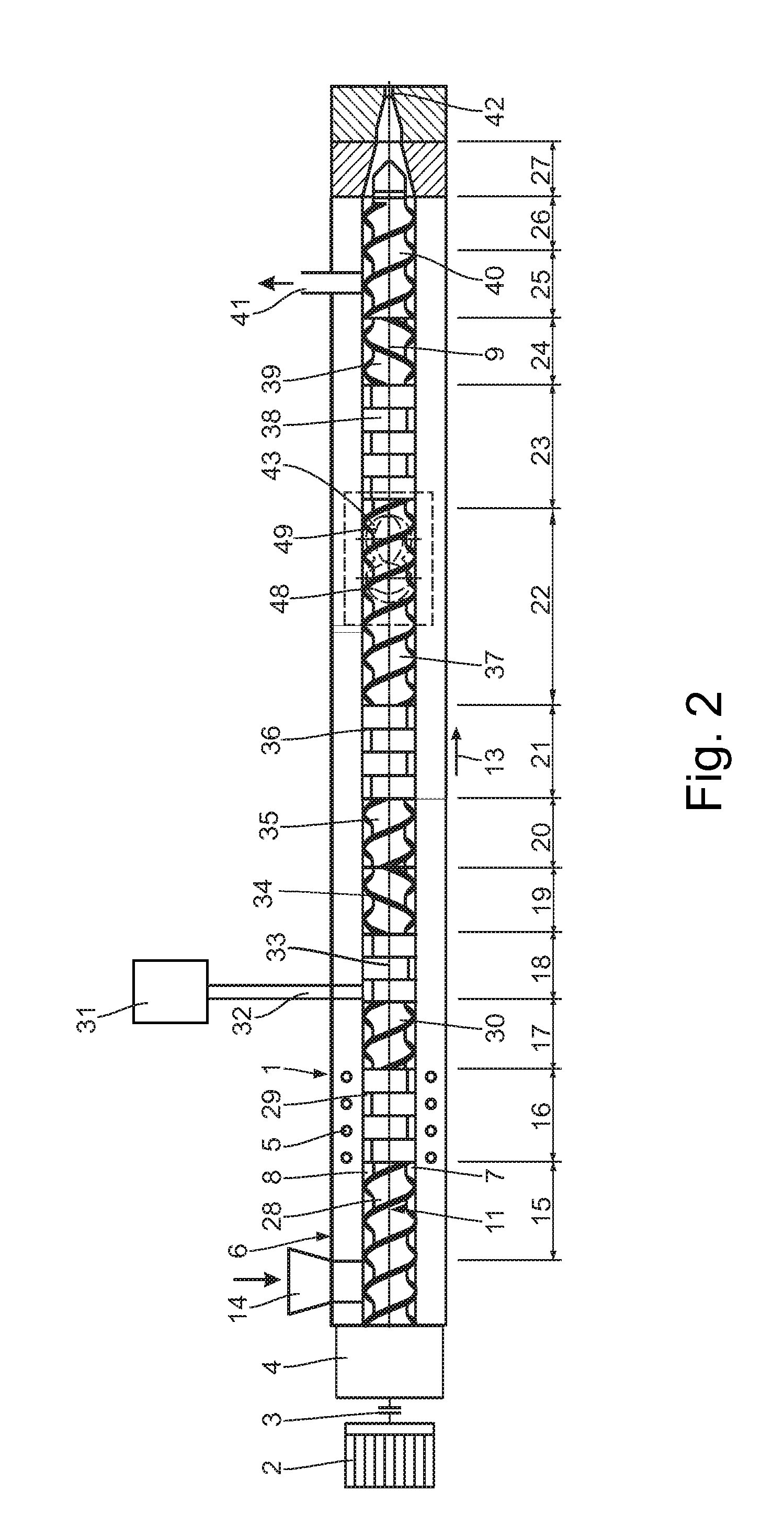METHOD FOR PRODUCING COMPOSITE MATERIALS BASED ON POLYMERS AND CARBON NANOTUBES (CNTs), COMPOSITE MATERIALS PRODUCED IN THIS WAY AND USE THEREOF
a technology of carbon nanotubes and composite materials, which is applied in the direction of non-metal conductors, conductors, non-conductive materials with dispersed conductive materials, etc., can solve the problems of insufficient homogenisation of mixtures, insufficient electrical properties, and low filling ratios
- Summary
- Abstract
- Description
- Claims
- Application Information
AI Technical Summary
Benefits of technology
Problems solved by technology
Method used
Image
Examples
production example 1
Example 3 According to EP 0 154 678 A1
[0156]7.7 parts of an aliphatic hexamethylene diisocyanate-based polyisocyanate of the Biuret type having a free NCO content of 22% were homogenised under a protective atmosphere with parts of ethyl glycol acetate and 10.2 parts of a monohydroxy functional methoxypolyethylene glycol having a number average molecular weight Mn of 750, dissolved in 15 parts of ethyl glycol acetate, 0.004 parts of dibutyl tin dilaurate were added and the reaction mixture was heated to 50° C. Once a third of the NCO groups had reacted, 5.4 parts of polyethylene glycol having a number average molecular weight Mn of 800 and dissolved in 15 parts of ethyl glycol acetate were added. Once 66% of the NCO groups introduced had reacted, the reaction mixture was diluted with 23 parts of ethyl glycol acetate, and 1.7 parts of 1-(2-aminoethyl)piperazine were added. The reaction mixture was stirred at 70° C. for two hours. The product is yellowish and slightly viscous.
production example 2
Example According to EP 1 640 389
[0157]Example for a dispersing agent which is based on a copolymer of unsaturated 1,2-acid anhydrides modified by polyether groups and which can be used in accordance with the invention: A mixture of 80 g of conjugated sunflower fatty acid, 37 g of maleic anhydride, and 42 g of polyoxyethylene allylmethylether having an average molecular weight of 450 were provided and heated to 137° C. with stirring. A solution of 4.4 g of tert-butylperbenzoate in 53 g of dipropylene glycoldimethylether was added dropwise within a period of four hours. Once the addition was complete, the reaction mixture was stirred at 137° C. for a further 0.5 hours. The product obtained had a solid content of 75%. 91 g of this product were mixed with 84 g of a primary monoaminalcoxylate having an EO / PO ratio of 70 / 30 and an average molecular weight of 2,000, and with 0.2 g of para-toluene sulfonic acid, and the reaction mixture was stirred at 170° C. for three hours. A water separ...
PUM
| Property | Measurement | Unit |
|---|---|---|
| temperature | aaaaa | aaaaa |
| feed pressure | aaaaa | aaaaa |
| inner diameters | aaaaa | aaaaa |
Abstract
Description
Claims
Application Information
 Login to View More
Login to View More - R&D
- Intellectual Property
- Life Sciences
- Materials
- Tech Scout
- Unparalleled Data Quality
- Higher Quality Content
- 60% Fewer Hallucinations
Browse by: Latest US Patents, China's latest patents, Technical Efficacy Thesaurus, Application Domain, Technology Topic, Popular Technical Reports.
© 2025 PatSnap. All rights reserved.Legal|Privacy policy|Modern Slavery Act Transparency Statement|Sitemap|About US| Contact US: help@patsnap.com



